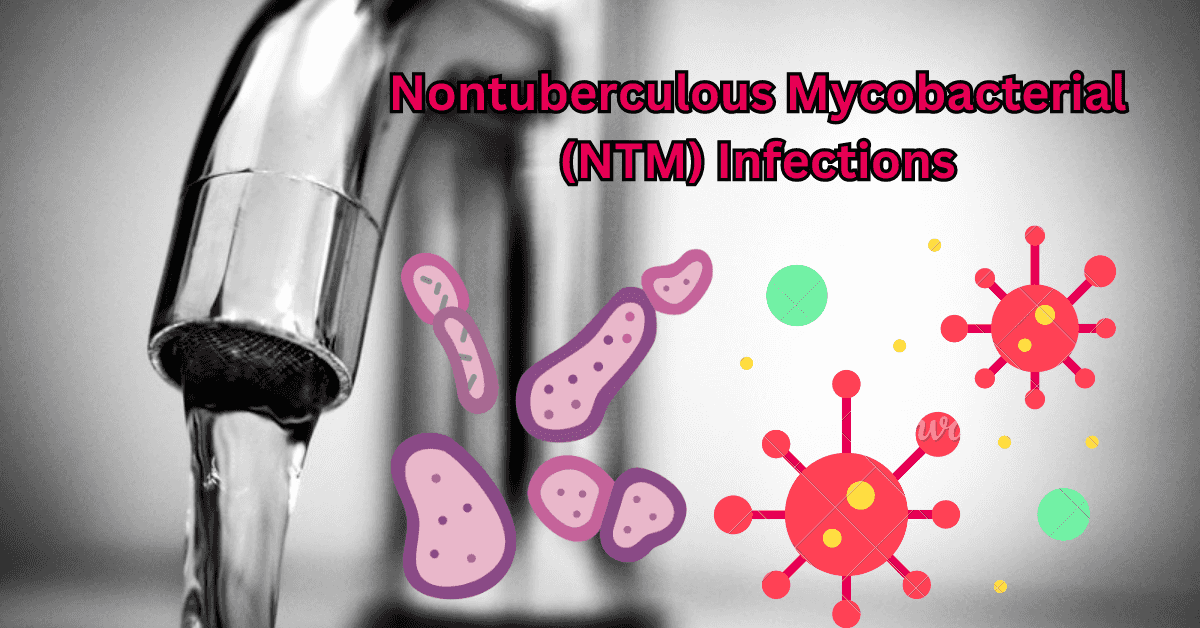Discover the alarming rise of “Nontuberculous Mycobacterial (NTM) Infections” in the US, with some studies showing the bacteria present in 78% of tap water. Learn about the risk factors, challenges in treatment, and promising therapies for managing these complex infections.
If you’ve never heard of Nontuberculous Mycobacterial (NTM) infections, you’re not alone. These infections have flown under the radar for a while, but recent data suggests they’re more common than you might realize. In fact, a 2015 study found NTM bacteria in 78% of tap water samples taken in the United States. Here’s what you need to know about these infections, and why they’re a growing concern.
The prevalence of Nontuberculous Mycobacterial (NTM) infections, which are difficult to treat, has increased in the United States. A study in 2015 found the bacteria in 78% of sampled U.S. tap water, indicating how common these infections have become.
NTM organisms are usually found in water and soil and are resistant to heat and chlorine in our water systems due to their lipid-rich cell membrane, which allows them to adhere to pipe surfaces and form biofilms. People can inhale these organisms, which are aerosolized from showerheads or kitchen faucets, leading to infection.
Several factors make people vulnerable to NTM infection, including an aging U.S. population, an increased number of people with underlying lung disease, and elevated use of immunosuppressive medications. In a recent six-month pilot study of active, population- and laboratory-based surveillance for NTM, 73% of patients with pulmonary NTM had underlying lung disease.
What Are NTM Infections?

NTM infections are caused by bacteria that are found in soil and water. These bacteria are naturally resistant to heat and chlorine, and they can form biofilms on the inside of pipes, making them difficult to eliminate from water systems. People can inhale the bacteria when they shower or use faucets, leading to infection. NTM infections can affect different parts of the body, but the lungs are the most commonly affected.
Why Are NTM Infections on the Rise?
Several factors are contributing to the increase in NTM infections. For one, the aging U.S. population is more vulnerable to infection. Additionally, more people have underlying lung disease, which puts them at higher risk. Finally, the increased use of immunosuppressive medications is also a factor.
A recent six-month pilot study of the active, population- and laboratory-based surveillance for NTM showed that 73% of patients with pulmonary NTM had underlying lung disease.
What Are the Challenges in Treating NTM Infections?
One of the biggest challenges in treating NTM infections is that hospital laboratories are often not equipped to culture and test samples for resistance. This means that doctors and pharmacists often start patients on a multidrug regimen based on typical susceptibilities in the literature.
Additionally, some NTM bacteria are resistant to common antibiotics, making them difficult to treat. NTM infections can require prolonged treatment and can be complicated, requiring interdisciplinary care.
What Are the Treatment Options for NTM Infections?
A typical regimen for the treatment of NTMs consists of a combination of antimicrobials with macrolide as the backbone therapy. However, fast-growing NTMs, like Mycobacterium, can prove resistant to these drugs.
Common tuberculosis drugs such as rifampin or ethambutol are also used to treat many slow-growing NTM infections. In 2018, the FDA approved amikacin liposome inhalation suspension (Arikayce, Insmed) for one NTM infection, refractory Mycobacterium avium complex.
The safety and efficacy of amikacin liposome inhalation suspension were demonstrated in a controlled clinical trial. Patients were randomly assigned to one of two treatment groups: amikacin plus a background multidrug antibacterial regimen or a background multidrug antibacterial regimen alone.
Conclusion
NTM infections are becoming increasingly common in the United States. These infections can be difficult to treat due to antibiotic resistance, and patients often require prolonged treatment and interdisciplinary care. If you think you may have an NTM infection, it’s important to seek medical attention. An infectious disease specialist, pulmonologist, or pharmacist can help coordinate treatment and ensure the best possible outcome.
(With inputs from IDSE)
Also Read: Google Experts Warn Android Users About Wi-Fi Calling Risks: Here’s Why
